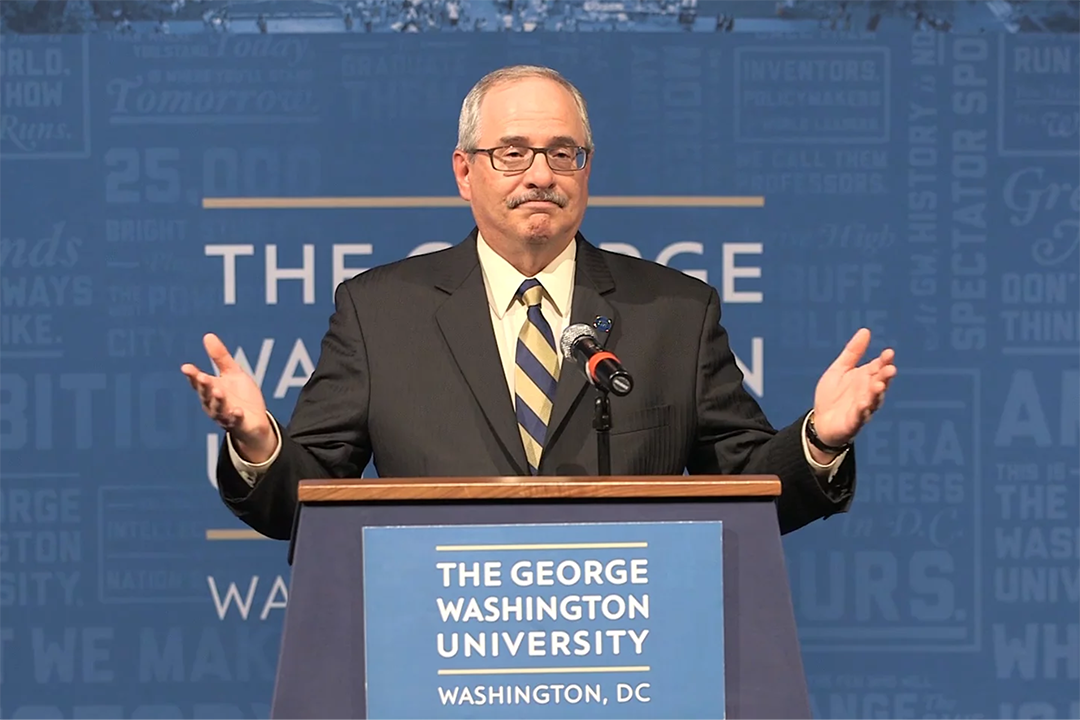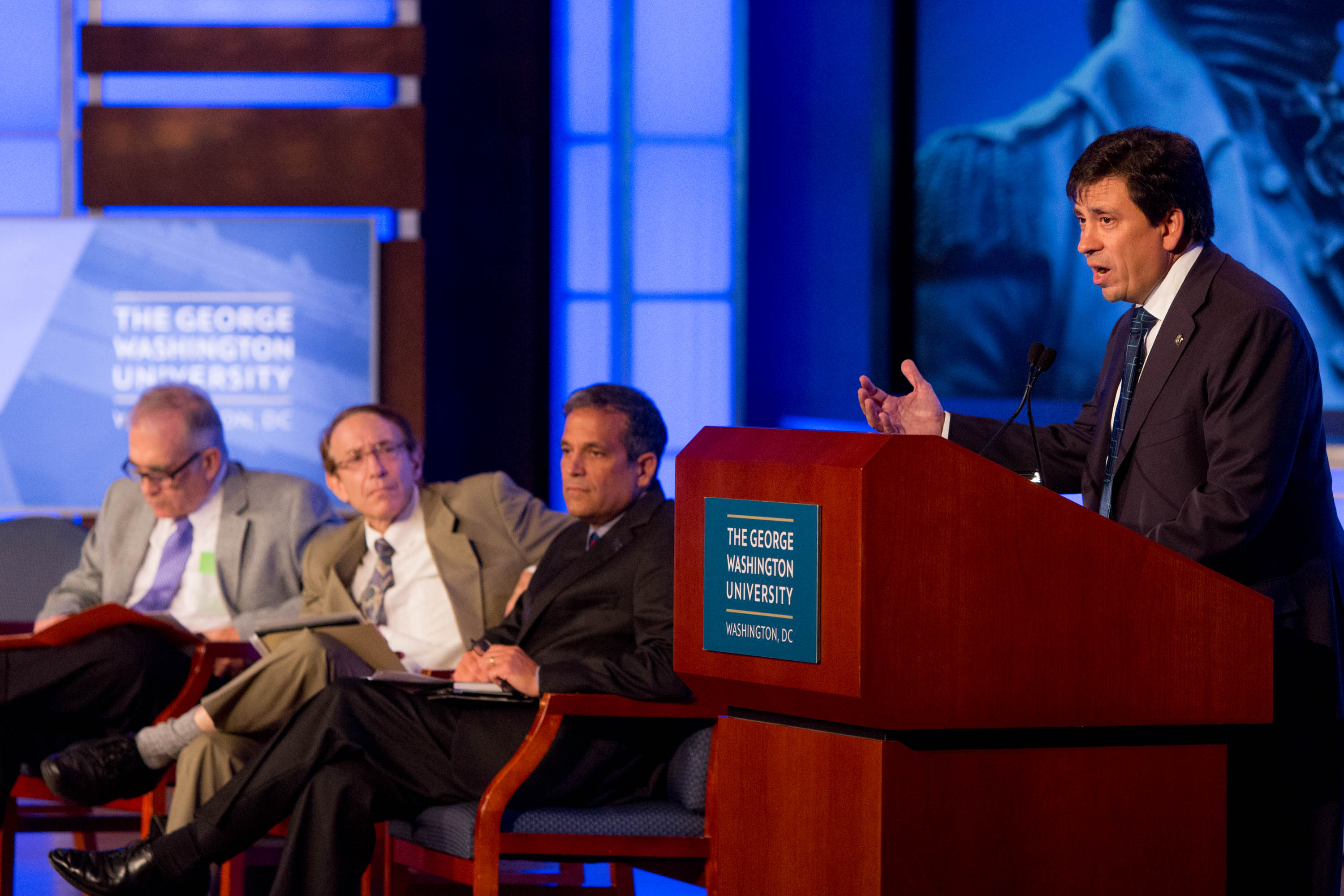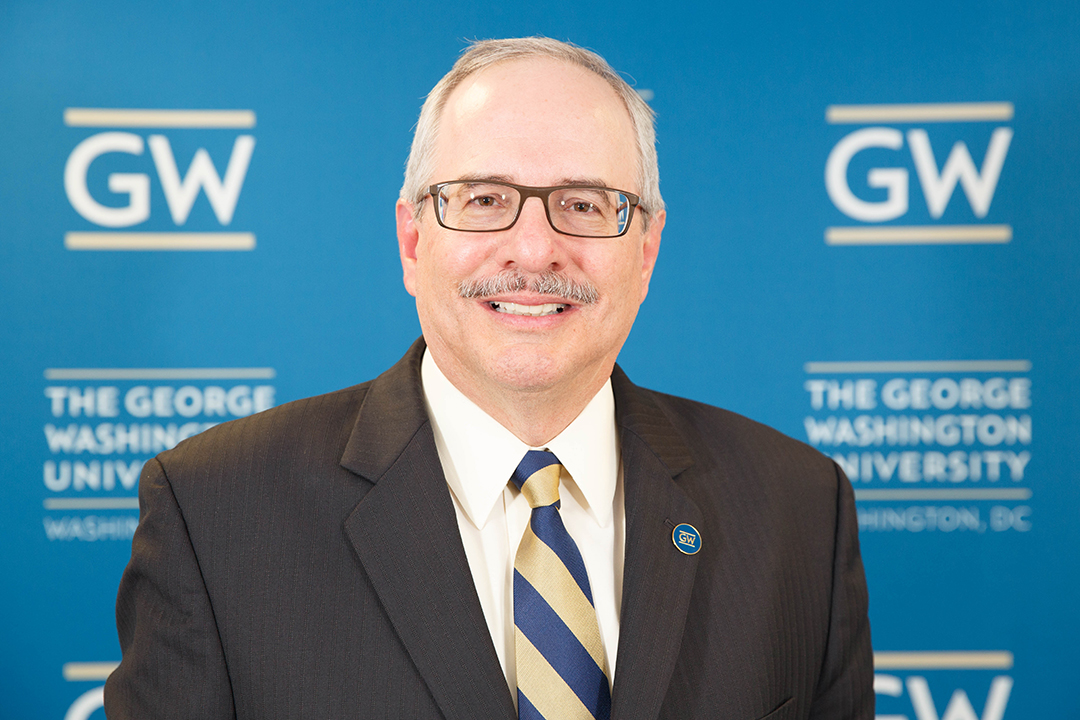By Kurtis Hiatt
The story of his life, Thomas LeBlanc said Friday, is one defined by education.
“At age 5, I left home to go to school, and every step of the way I never took a break,” Dr. LeBlanc told a packed house at Betts Theatre shortly after the George Washington University Board of Trustees unanimously approved his appointment as the university’s 17th president.
Indeed, Dr. LeBlanc is now an accomplished academic leader whose current post is as executive vice president, provost and professor of computer science and electrical and computer engineering at the University of Miami. He is both the chief academic officer and the chief budget officer, responsible for the university’s 11 schools and colleges, the library system, the division of student affairs, the division of continuing and international education and undergraduate education, admissions and financial aid.
In remarks on Friday, Dr. LeBlanc spoke emphatically about his belief in the “transformative power” of higher education.
“I believe it is the strongest force for social mobility in the United States,” he said. “And that’s what gets me up in the morning. Being a part of that.”
Beginning in August, Dr. LeBlanc will wake up to head the largest university in the District, which he said, “at this moment in time, in this great city,” is an honor—as well as a challenge and “incredibly exciting adventure.”
The appointment of Dr. LeBlanc concludes a months-long process led by the Presidential Search Committee, which unanimously recommended his hire.
The search committee worked in consultation with the elected Faculty Consultative Committee, the Faculty Senate Executive Committee and with input from university and local community members in more than 30 town halls. Feedback during this process helped shape the presidential profile used to advertise the position.
In the end, Board of Trustees member Madeleine Jacobs, B.S. ’68 and D.Sc. (Honorary) ’03, search committee chair, said Dr. LeBlanc “fits this profile to the letter.”
“In Dr. LeBlanc, we saw a person who will elevate GW’s academic excellence, enhance the student experience and ensure that the university remains a diverse and inclusive partner with every segment of the university and local communities,” she said. “As a GW alumna, I am so proud that he will be our next president.”
Board of Trustees Chair Nelson Carbonell, B.S. ’85, said in his remarks that although the board officially approved Dr. LeBlanc’s appointment, it took the entire university community’s participation to get to this point.
Mr. Carbonell also noted that he was particularly struck by the reference calls he made for Dr. LeBlanc. Over and over, he got the impression that Dr. LeBlanc “was someone in the computer science world we call WYSIWYG: what you see is what you get,” Mr. Carbonell said, referencing a web editor that allows a user to see what content will look like online.
Dr. LeBlanc—who was also interim president of the University of Miami in 2015 and rose through the academic ranks at the University of Rochester in faculty and administrative roles—said he always knew it would take an “incredible” opportunity to leave his current role.
“When they called about GW, the first thing I thought was, ‘This is one of those incredible opportunities,’ ” he said.
And on Friday, Dr. LeBlanc made a pledge: that he will spend a lot of time listening.
“I don't come in with a master plan template that I’ve applied in all my previous jobs,” he said. “Every institution has its own unique characteristics, traditions, histories and community, and all of those things help define best future pathways for the institution.”





